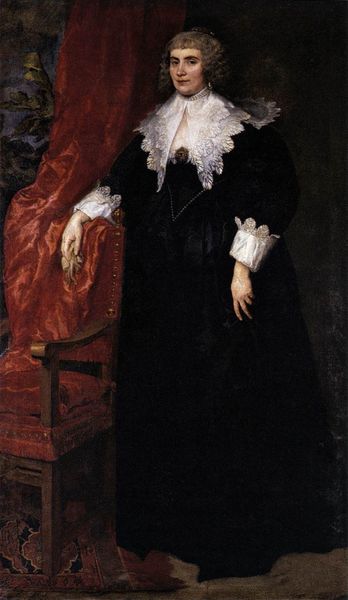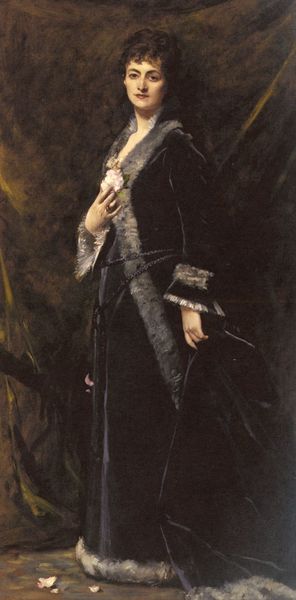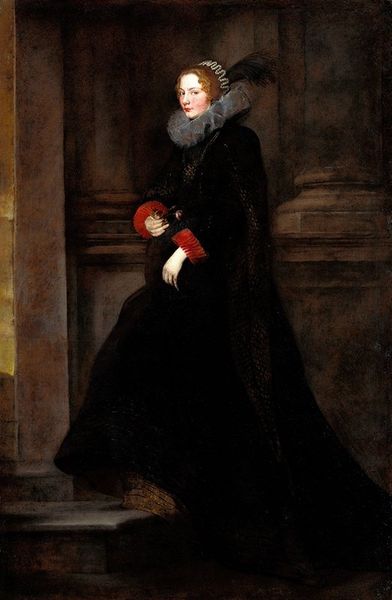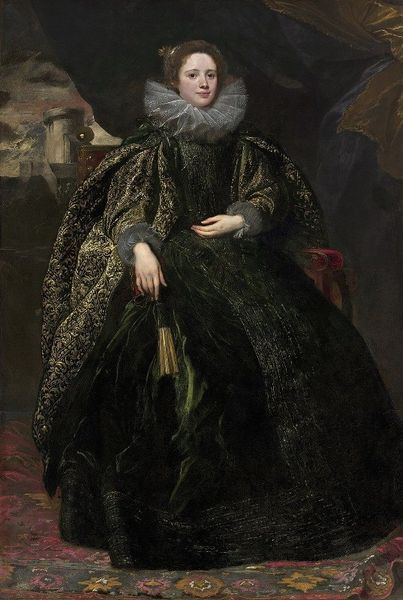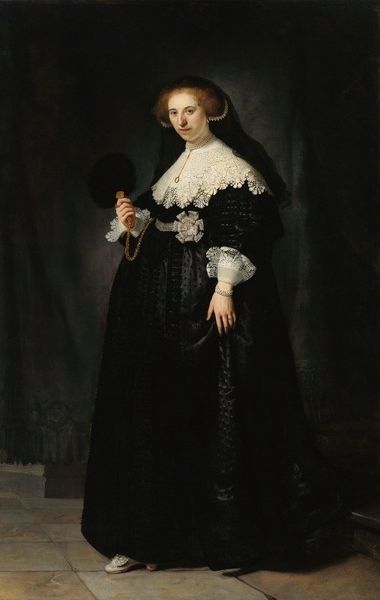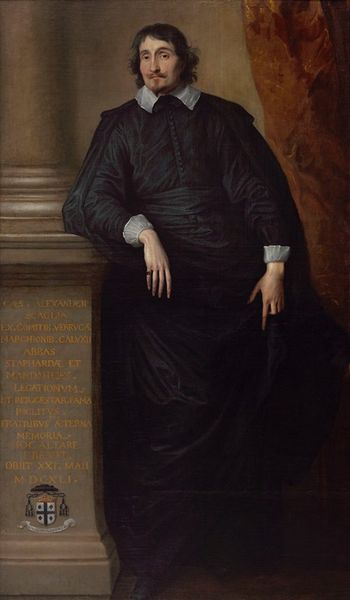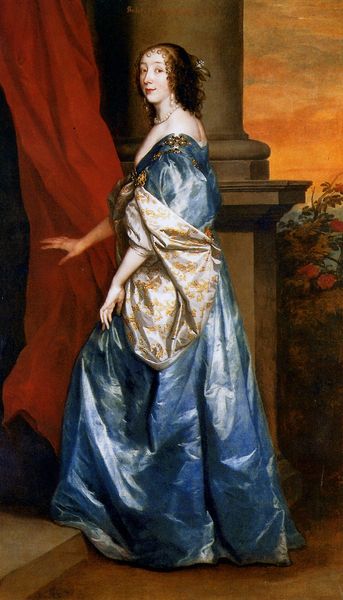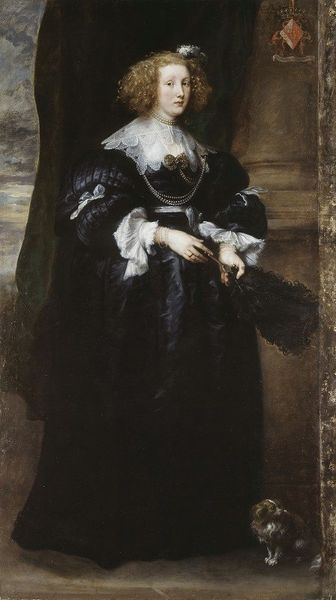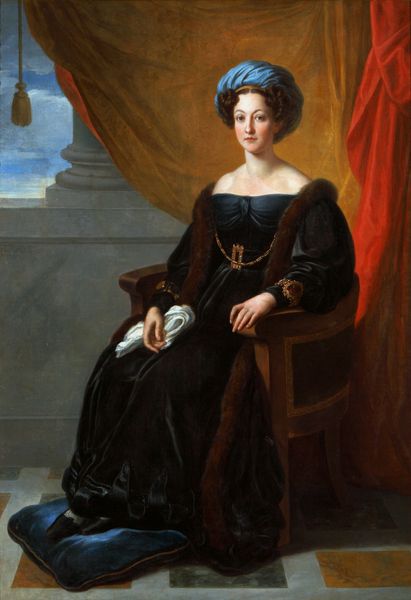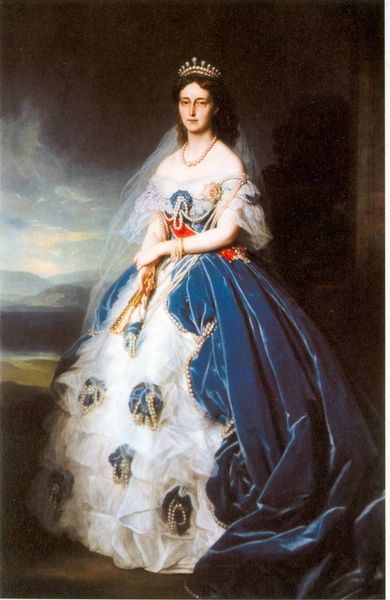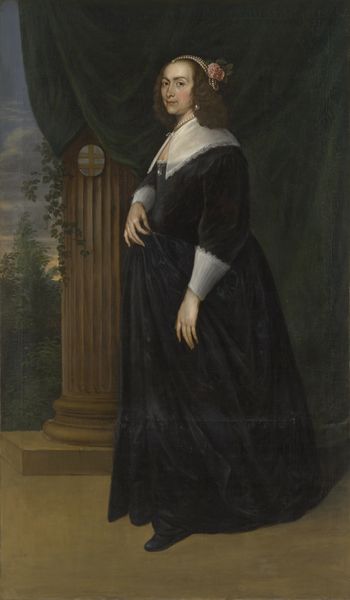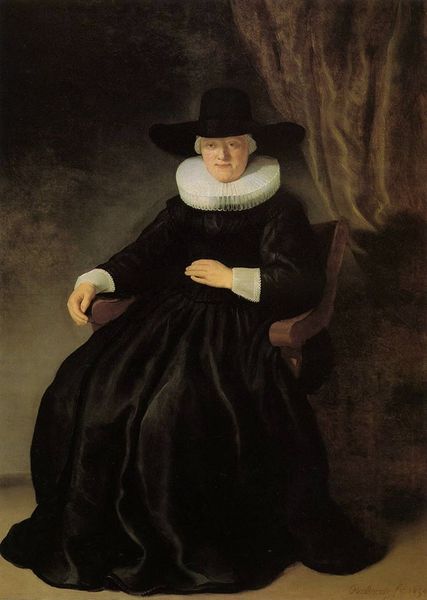
Dimensions: 117 x 204 cm
Copyright: Public domain
Curator: Here we have Anthony van Dyck’s "Portrait of Marguerite of Lorraine, Duchess of Orleans," executed in 1634, and now held in the Uffizi Gallery. Editor: There's a somber weight to the painting; the sheer volume of dark fabric overwhelms the Duchess. It almost feels like mourning, despite the bright crimson backdrop. Curator: Indeed. Notice how Van Dyck employs a limited palette, primarily contrasting the deep blacks of her dress with the bright red curtain, and the soft luminosity of her skin. It's a study in texture as well—the velvet against the delicate lace. Editor: And the subtle details. She's holding a rose. Red roses often symbolize love, passion, but the almost withered state of this one adds a layer of poignancy, maybe unfulfilled desires, or lost youth, considering that she married in exile. Curator: An insightful observation. One must also appreciate the compositional balance Van Dyck achieves. The implied diagonal created by the drapery counters the verticality of the Duchess’s figure, creating a subtle dynamic tension. Editor: Beyond its formal qualities, the red drape carries historical weight; it immediately signifies royalty, grandeur, perhaps a veiled reference to the stage of history itself on which Marguerite plays her role. A role which, based on her dark gown, could imply a lack of power. Curator: Yes, one can certainly interpret the crimson curtain as emblematic of her status as a Duchess. Although, let us consider that such color was commonly utilized to compliment the high class status and appeal to an aristocratic sensibility. Editor: A crucial reminder not to leap to premature conclusions based only on semiotics, and to appreciate the power of sheer artistic design as its own symbol, indeed. Curator: Well, I think examining both Van Dyck's choices and his subject matter has given us a comprehensive insight into the Duchess’s portrait and it’s position amongst the Uffizi’s artwork. Editor: Indeed. Whether through signs, symbols, or the sheer arrangement of pigment, artworks often reflect the soul of their creators and their subjects alike.
Comments
No comments
Be the first to comment and join the conversation on the ultimate creative platform.
